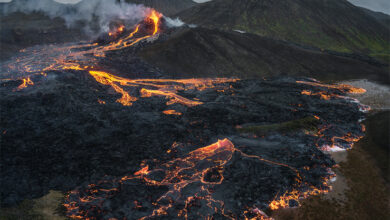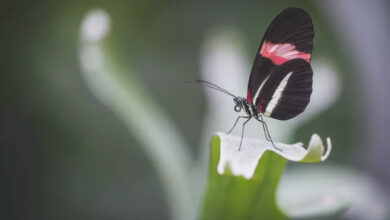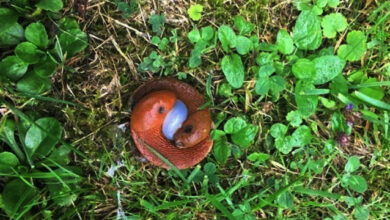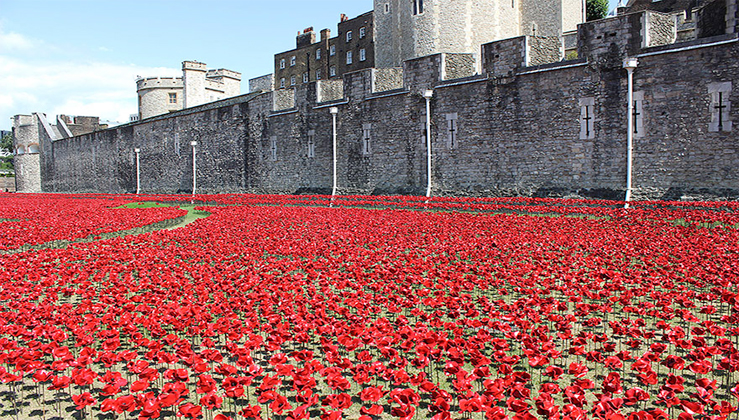
A stunning installation of 888,246 hand-crafted ceramic poppies surrounds the Tower of London, honoring each British and Colonial life lost in WWI. The powerful tribute, “Blood Swept Lands and Seas of Red,” educates, commemorates, and raises funds for veteran charities.
In a breathtaking tribute marking the centenary of the First World War, the Tower of London became the stage for a deeply moving art installation. From August 5th to November 11th, 2014, the historic site was enveloped in a crimson sea of 888,246 ceramic poppies—each one representing a British or Colonial servicemember who lost their life during WWI. Titled “Blood Swept Lands and Seas of Red,” the display was designed by theater artist Tom Piper and ceramicist Paul Cummins. This powerful commemoration transformed the Tower’s dry moat into a visual metaphor of sacrifice and remembrance. The poppies poured dramatically from the walls of the tower, resembling a cascade of blood.
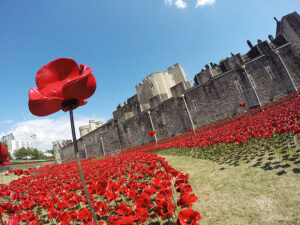
Other blooms stretched across the surrounding grounds, while some were delicately suspended over arches, creating a haunting yet beautiful environment. Every single flower was individually planted by over 8,000 dedicated volunteers over the course of several months. More than just a visual marvel, the installation served as a platform for public education, personal reflection, and remembrance. A daily Roll of Honour ceremony added to the poignancy, where 180 names of fallen soldiers—submitted through public nomination on the Historic Royal Palaces website—were solemnly read aloud.
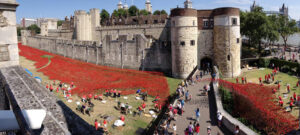
Poppies, long associated with both sleep and death due to their opium-producing properties and vivid red hue, have symbolized remembrance since ancient times. Their widespread use in WWI memorials traces back to their prominent growth on battlefields like Flanders, immortalized by John McCrae’s poem, “In Flanders Fields.” The final ceramic poppy was ceremonially planted on November 11, 2014—Armistice Day—marking the end of the installation and evoking a moment of national and personal reflection.
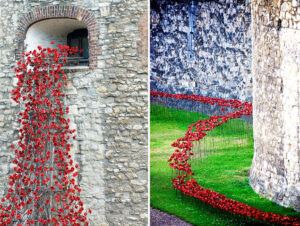
Each hand-crafted flower, made by Paul Cummins, was later made available for purchase at £25 apiece, with proceeds benefiting six military charities: the Confederation of Service Charities, Combat Stress, Coming Home, Help for Heroes, the Royal British Legion, and SSAFA. From children to veterans, the installation offered visitors of all generations the chance to honor the past and learn its enduring lessons—reinforcing the message that remembrance is not just for one day, but for every day that follows.

